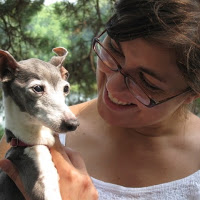
by Mary Kate Hurley
Now I'm sure that everyone in the medievalist world has heard of the The Digital Scriptorium, a fantastic resource created through a cooperation of my home institution (Columbia), Berkeley, and other universities throughout the country. Essentially, it has high quality pictures and their catalog records (5,300 manuscripts and for 24,300 images) online and available. Digital Scriptorium is a fascinating project, not merely because of its use for scholars, but because of its use for students. As Chris Baswell said in the opening class of "The Medieval Culture of the Book" last week, it is possible to work on manuscripts in an entirely different way now, even at the student level. Actually teaching graduate students how to read and work with manuscripts is far easier (and, from what it sounds, more pleasant) with the digital technology available on the web, replacing the far more difficult work of transcribing from fax or from a photocopy of the original MS.
Now I'm clearly referencing Deleuze and Guattari in my title, but it's interesting to think through Digital Scriptorium with regards to my own progress in graduate school. I'm beginning my fifth year. I passed my exams, the dissertation is currently underway. I'm teaching University Writing for the fifth semester in a row. However, were I to be honest, the two classes I'm taking (Medieval Culture of the Book, which is also known as Codex and Criticism, and Paleography) are the first time I've really felt like a medievalist. I've always known that my academic heart was, first and foremost, in medieval literature, but all too often I've felt like the only difference between being a medievalist and being a twentieth century-ist is that my texts aren't in Modern English.
But this is different, somehow. This foray into the world of manuscripts feels older, somehow. And yet, to access this knowledge, to learn how to decode these old texts, I'm not really confronting the things themselves (though Consuelo Dutschke -- the Curator of Medieval and Renaissance Manuscripts at Columbia's Rare Books and Manuscript Library, and the professor for my Paleography course -- is of course having us look at the physical manuscripts and codices as well). I'm still getting my input, so to speak, through a technological medium. My first thought is -- what is lost by transcribing from a virtual manuscript, a picture on an internet site? But even as I write that question I realize that the question that's more interesting is the one that reminds me that medieval manuscripts themselves, and the writing which inhabits their (once-living animal skin) pages are both forms of technology, if in many cases less "shiny" than my computer screen.
So yes -- this is a semester of Paleography for me, one I hope to put to good use. Reminding myself that there's more to "technology" than meets the eye, it's kind of cool to think that by re-engaging medieval texts in a medium for which they were not meant, the reading of those manuscripts becomes itself a different experience, one that can help me think through media in today's Internet and television driven world.
In short: once, I dreamed of being a Paleontologist, until I realized that I had no talent for science and no patience for digging up things in remote deserts. All I wanted to think about was the dinosaurs, their world -- what it was like to live back then. Although there is a paucity of dinosaurs in medieval literature (Saint Augustine excepted), I find that my interest in paleography is another way of returning to the things I find most moving about medieval literature: the way in which words touch us (and are touched by us) over immense swathes of time. The way in which the physical object of the book survives from the past, and faces questions from scholars its pages might only ever partially answer. But we still get to try. And even without dinosaurs -- that's pretty amazing stuff.
>
Monday, September 15, 2008
Digital Scriptorium, or, Becoming (a) Medievalist
Posted by Mary Kate Hurley at 1:18 PM 1 comments
Labels: grad school, paleography, time
Subscribe to:
Comments (Atom)


